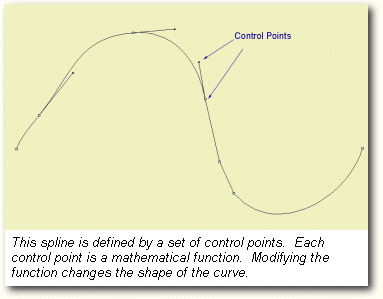High-Tech And Vertex Juggling - NVIDIA's New GeForce3 GPU
Higher Order Surfaces
Almost 18 months have passed since NVIDIA released the first 3D-chip with integrated transform and lighting (GPU). In the beginning it looked as if that didn't have any impact on the game developers at all, but finally 3D-games started to take advantage of integrated T&L and now the number of triangles used per frame is continuously growing. NVIDIA should be pleased, because it was asking for more triangles, more geometry detail, or more vertices.
In the past, most of the AGP-bandwidth was used for texture loads. 1x AGP was finally becoming too slow and 2x AGP became state of the art. Today, texture compression algorithms are used, so that texture transport is not really the big problem anymore for today's 4x AGP cards. This does not mean however, that the bandwidth of 4xAGP isn't required. In fact, 4xAGP is already becoming a serious bottleneck, because the increasing geometric detail requires more and more vertex transfers and will finally saturate the AGP with huge amounts of vertex traffic to the 'GPU'.
Another problem is that today's game developers are somewhat stressed creating all those nifty objects with their high geometric detail. While buildings and characters may still be a lot of fun to design, landscape design is a rather boring task if you've got to incorporate ten thousands of triangles for high detail. Today there are a lot of tools that do this job for the developer, but why should these highly detailed objects be transferred vertex by vertex across the AGP if these tools are able to create complex 3D objects out of only a few parameters in the first place? Wouldn't it be wiser to transfer the parameters and incorporate those tools into the GPU?
Then there is another annoying fact. Today's 3D-objects are always represented by the same amount of vertices, regardless if they are close to the viewport or far away and hardly visible. Many triangles of these objects are just as small or even smaller than one pixel . The unnecessary detail of those objects is saturating the AGP and the small triangles pose a serious performance problem to the rendering pipeline.
Microsoft's latest approach to tackle those problems is hidden behind the term 'higher order surfaces'. The idea is to describe curved surfaces only with some control points. A curve or surface that is only defined by some control points or control vertices and a certain function/formula that describes the geometry of the actual shape is called 'Spline'.

Stay on the Cutting Edge
Join the experts who read Tom's Hardware for the inside track on enthusiast PC tech news — and have for over 25 years. We'll send breaking news and in-depth reviews of CPUs, GPUs, AI, maker hardware and more straight to your inbox.
Current page: Higher Order Surfaces
Prev Page Quincunx ! Samples Next Page Higher Order Surfaces, ContinuedMost Popular

